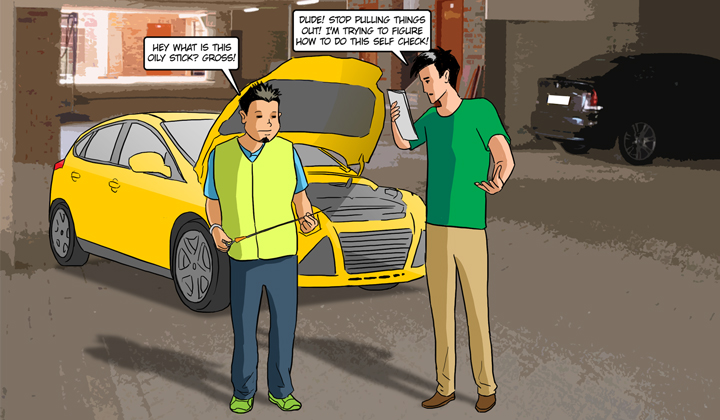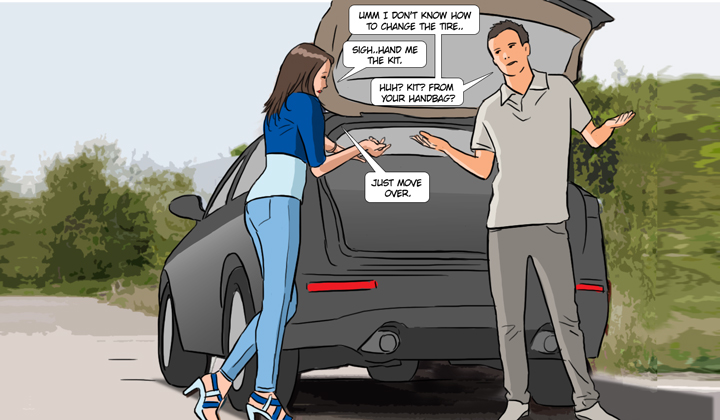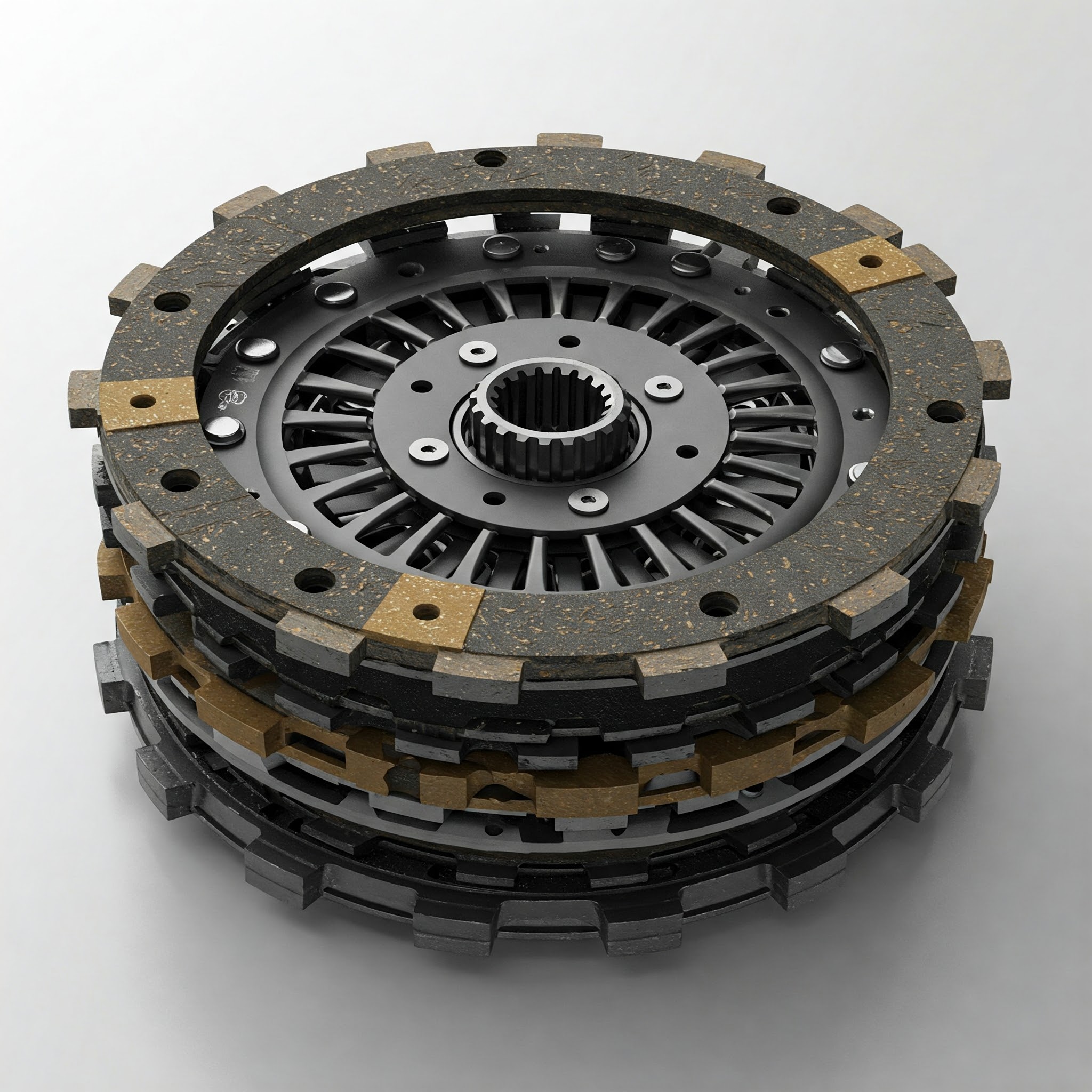Want to know how to maintain your car’s good health? Take a look at this check-list that teaches you the right methods of ensuring your car is in good shape.

It’s so important to get your car serviced each year and then maintain it between services. Well, the former can be easily done by your car mechanic at the service station. But, do you know that the latter bit can be done by you as well?
Yup! You can easily be your car’s doctor if you give it a monthly check-up. Doing so would not only keep the car in good shape but also ensure you have a hassle-free ride without any glitches.
It’s no rocket-science. Just a little technical knowledge (that we are going to give you now) and you’re good to go.
Let’s get started.
Essential things you need to check
Here are some of the essential things you need to CHECK:
Fuel
Check if your car has an adequate storage of fuel to sustain throughout a trip. If the fuel tank is half full or less than that, you must refill it as the more oil you have in your tank, there is less air occupied. Fill it up with less throttle to avoid evaporation.
Fluids Level
Check if the coolant, clutch fluid (or brake fluid) and power steering fluid have appropriate levels. The fluid level should be between the minimum and maximum lines that are shown on the reservoir. If it isn’t then you can pour fluid that is specifically recommended in the car’s manual.
Engine Oil
If it’s almost time to change the engine oil, then do not hesitate to do so. Adding extra oil won’t work as an oil change because it won’t help you get rid of the sludge from the used oil. When replacing old oil, ensure you replace the oil filter at the same time. The dipstick that is connected to the oil tank of the engine can help you determine how much oil is still left in the tank. Go through your car user manual for more information.
Tires
Check if your tires are inflated to the right degree. The air pressure can be checked by using a tire pressure gauge. The pressure marked on the side of the tire is maximum and must not be exceeded. You can similarly check for the spare tire as well. Travelling with a spare tire that is unusable is as good as not carrying a tire at all. Tubeless tires are a safer option.
Do not forget to check the tread depth to understand if they are worn out.

Trick: A tread gauge or a coin can help check tread depth of tires
Place a penny in between the tire treads to check if at least 1/16th" or 1.6mm tread depth is left. On long journeys, the tires could heat up causing blowouts on worn out tires. You can consider replacing them on long journeys as they could wear out more quickly.
Wiper Blades
A broken or unclean wiper blade may not function to its optimum when wiping the windscreen. This could hamper your vision and prove to be risky, especially if there are sharp turns.
Headlights & Signals
You may not have thought about this, but headlights shouldn’t be ignored for long trips. The brightness and intensity has to be tested. Check if it has scratches. Too many of them could reduce the intensity of light emitted from the headlights. You may require a little help of another person for this. Sit in the car and turn on each light and signal. Ask your friend to tell you if it’s working or not. Replace the bulb if necessary. Check the alignments of the headlights as an inappropriate alignment can reduce the visibility of roads especially at nights.
Air filter
Supplying adequate clean air to your car’s engine can improve its performance and efficiency. Check your car’s cabin (pollen) filter, in case if it has one. If it’s very dirty or rusted, it needs to be cleaned or replaced. Such a check-up should not be ignored or else it could adversely affect the quality of air in the cabin.
Emergency Equipment
This has to pretty much be considered as a part of your car’s health. When we talk about emergency equipment, we mean an emergency tool kit (adjustable spanner, flashlight, screwdrivers, and pliers), a puncture repair kit, medical kit, and flares can ensure you aren’t stranded and get you out of a messy situation. Make sure you have the toll-free roadside assistance number on your speed dial and your car insurance papers always in your car. Keep a bottle of engine oil in the bonnet of your car just in case of misfortunate engine oil leaks.

That’s it folks. As a responsible car owner, we know you wouldn’t mind taking the above basic steps to maintain your car’s good health. :)
Also Read: 10 Commandments for a Happy Road Trip






